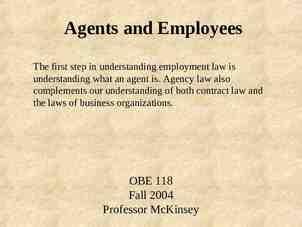Chapter 1: Introduction to corporate finance Corporate Finance Ross,
35 Slides412.45 KB

Chapter 1: Introduction to corporate finance Corporate Finance Ross, Westerfield, Jaffe & Jordan

Outline I. What is corporate finance? II. The importance of cash flows III. The goal of financial management IV. The agency problem and control of the corporation V. Ethics, sustainability, and corporate governance VI. Financial markets

Main tasks of corporate finance Capital budgeting: the process of planning and managing a firm’s long-term investments fixed assets. Example: deciding whether or not to open a new restaurant. Example: deciding whether or not to introduce a new line of products. Capital structure: the mixture of debt and equity maintained by the firm S-T and L-T debt and equity. Working capital management: a firm’s short-term assets and liabilities current assets and current liabilities.

The Capital Budgeting Decision Current Liabilities Current Assets Fixed Assets 1 Tangible 2 Intangible Long-Term Debt What long-term investments should the firm choose? Shareholders ’ Equity

Modern forms of firms Corporation: a business created as a distinct legal entity composed of one or more individuals or entities, e.g., IBM. Separation of control (shareholders) and management (professionals). Ownership can be easily transferred. Limited liability. Double taxation. Rather expensive to form. Agency problems.

Who make the decisions? Owners (typically in small businesses). Professional managers.

Financial managers Frequently, financial managers try to address these tasks. The top financial manager within a firm is usually the Chief Financial Officer (CFO). Treasurer – oversees cash management, credit management, capital expenditures and financial planning. Controller – oversees taxes, cost accounting, financial accounting and data processing.

How do financial managers create value w.r.t. cash flows? The firms must create more cash flows than it uses. Specifically, 1. Select/acquire assets that generate more (discounted) cash flows than they cost. 2. Sell bonds and stocks that raise more cash/capital than they cost.

The importance of cash flows Cash for securities issued by the firm (A) Firm Invests invests in in assets assets (B) (B) Retained cash flows (E) Short-term debt Cash flow from firm (C) Dividends and debt payments (F) Taxes Current assets Fixed assets Financial markets Ultimately, the firm must be a cashgenerating activity. Government (D) Long-term debt Equity shares The cash flows from the firm should exceed the cash flows from the financial markets.

Possible goals of financial management Survive Beat the competition Maximize sales Maximize net income Maximize market share Minimize costs Maximize the value of (stock) shares

The “appropriate” goal of financial management Maximize the (fundamental or economic) value of (stock) shares is the right goal. Why? Shareholders own shares. Managers, as agents, ought to act in a way to benefit shareholders; i.e., to enhance the value of the shares. A limitation of this goal is that value is not directly observable.

A sample question The primary goal of financial management is to: a. maximize current dividends per share of the existing stock. b. maximize the current value per share of the existing stock. c. avoid financial distress. d. minimize operational costs and maximize firm efficiency. e. maintain steady growth in both sales and net earnings.

Home Depot CEO gets 210 million severance for sucking at job Robert L. Nardelli, the CEO of Home Depot, who came under heavy criticism for his pay package and failure to lift the chain ’s stagnant stock price, has abruptly resigned. He will receive about 210 million in compensation from the company, including the current value of retirement and other benefits. Who would blame him for quitting? Source:digg.com; submitter: tennova.

Value vs. price The value of shares are not observable. In contrast, the price of shares can be observable. If one believes that share price is an accurate/good estimate of share value, the appropriate goal would be to maximize the price of shares. This belief/assumption is, however, questionable. But the previous slide (Home Depot ex-CEO), nevertheless, showed that investors care about stock price, and that stock price performance is very important to the tenure of managers.

Value maximization and corporate social responsibility Corporate social responsibility (CSR): On a voluntary basis, firms go beyond their legal and contractual obligations to operate in ways that enhance rather than degrade society and the environment; e.g., using fairtrade ingredients (coffee, tea); providing incentives for employee engagement in community service; reducing carbon footprint, etc. Do engaging in CSR lead to value maximization? It depends.

3 visions of CSR (Benabou and Tirole, 2010, Economica) Vision 1: Win-Win (doing well by doing good). Being a good corporate citizen can also maximize firm value. This is particularly so for the so-called “strategic CSR” that takes a socially responsible stance to strengthen one’s market position and raise rivals’ costs and thereby increase long-term profits and firm value; e.g., Patagonia’s environmental activism. This vision does not raise any specific corporate governance issue: this vision of CSR is consistent with value maximization.

A no-win situation The NBA's Golden State Warriors have distanced themselves from executive board member and minority owner Chamath Palihapitiya after he repeatedly said he didn't care "about what's happening to the Uyghurs" on a podcast. "As a limited investor who has no day-to-day operating functions with the Warriors, Mr. Palihapitiya does not speak on behalf of our franchise, and his views certainly don't reflect those of our organization," the San Francisco team said Monday. Chamath Palihapitiya is the founder of the Social capital, whose mission is to “advance humanity by solving the world’s hardest problems.” Chamath’s father applied for refugee status in Canada, on the basis that his father had been criticized for his views on the violence during the Sri Lankan civil war. Source: 01/08/2022, CBS; Wikipedia.

3 Visions of CSR Vision 2: Delegated philanthropy. Some stakeholders of the firm (e.g., employees, customers, investors) are willing to sacrifice money (e.g., wages, purchasing power, returns) so as to further social goals. These stakeholders do not have competitive advantages to pursue their philanthropy due to information barriers or transaction costs. They have some demand for corporations to engage in philanthropy on their behalf; that is, delegated philanthropy. Example: employees who are passionate in community service are often the most motivated employees. Firms have incentives to provide incentives for employee engagement in community service. Counterexample: “sin stocks” are disliked in the sense that they are perceived to be of higher risk, thus sold at a lower price (Hong and Kacperczky, 2009, JFE). This vision does not raise any specific corporate governance issue: this vision of CSR is consistent with value maximization.

CSR and sustainability Bolton and Kacperczyk (2021, JFE) find that stocks of firms with higher total CO2 emissions (and changes in emissions) are perceived to be of higher risk. Investors demand compensation for their exposure to carbon emission risk. The prices of stocks with higher carbon risk are on average lower.

Shareholders and other stakeholders Customers Suppliers Employees (human capital and assets) Creditors (bondholders, banks, debtholders) Government: tax and regulations Community (local / global) Owner/shareholder

3 visions of CSR Vision 3 (Friedman’s critique, 1970): Insider-initiated corporate philanthropy. The prosocial behavior (e.g., donation to a beloved museum) is not motivated by stakeholders’ demands or the desire to strengthen the firm’s long-term market position, but rather reflects management’s or the board members’ own desires to engage in philanthropy. This is doing charity with others’ money. This vision raises serious corporate governance issues. This vision of CSR is not consistent with value maximization; it destroys firm value.

The agency problem Agency relationship: Principals (citizens) hire an agent (the president) to represent their interest. Principles (stockholders) hire agents (managers) to run the company. Agency problem: Conflict of interest between principals and agents. This occurs in a corporate setting whenever the agents do not hold 100% of the firm’s shares. The source of agency problems is the separation of (owners’) control and management. Example: the 3rd vision of CSR.

Agency costs Direct costs: (1) unnecessary expenses, such as a corporate jet, and (2) monitoring costs. Indirect costs. For example, a manager may choose not to take on the optimal investment. She/he may prefer a less risky project so that she/he has a higher probability keeping her/his tenure.

Managerial incentives Managerial goals are frequently different from shareholders’ goals. Expensive perks. Survival. Independence. Growth and size (related to compensation) may not relate to shareholders’ wealth.

Corporate governance Corporate governance: the structure of rules, practices, and processes used to direct and manage a company. Compensation: Incentives ( , options, threat of dismissal, etc.) used to align management and stockholder interests. Corporate control: Managers may take the threat of a takeover seriously and run the business in the interest of shareholders. Pressure from other stakeholders (e.g., CalPERS, a powerful corporate police).

Stakeholders w.r.t. corporate governance – governments? China’s stock regulator plans to propose new rules that could thwart internet companies’ plans to list in the U.S. China plans to propose new rules that would ban companies with large amounts of sensitive consumer data from going public in the U.S. Source: WSJ, 08/2021

Sarbanes-Oxley Act (2002) “Sarbox.” 10K must have an assessment of the firm’s internal control structure and financial reporting. The officers must explicitly declare that 10K does not contain any false statements or material omissions. The officers are responsible for all internal controls.

Ethics Managers are expected to behave in an ethical manner. The province of ethics is to sort out what is good and bad. But, what is the criterion or guideline for doing so? Philosophers came up with some criteria, but none of them makes sorting out what is good and bad an easy task. Here, we introduce two of these criteria.

Principle 1 Golden rule: Do unto others as you would have others do onto you. But the next example, the so-called Sopranoism, shows the limitation of this principle: Whack the next guy with the same respect you’d like to be whacked with, you know? (Source: Cathcart and Klein, 2007).

Principle II Confucianism: Do not do to others what you do not want done to yourself. This is a rather robust (but passive) criterion. But its limitation is that it says nothing about what you should do.

Dilemma Ethical decisions often yield a dilemma. Suppose that you were the CEO of investment bank XYZ in 2005. The debt/equity ratio of the bank was 20. All of your competitors raised their debt/equity ratios to 30 to please the stock market so that their stock prices could be higher than otherwise would be. You knew that raising the debt/equity ratio to 30 was rather risky and could destroy the bank if business went wrong. But you knew the investors would be disappointed by the otherwise lower share price if you did not raise the debt/equity ratio.

So, what is the answer? I do not have an answer for this kind of ethical question because it is a dilemma; otherwise, I would not use the word “dilemma.” All I know is that you, as professional managers, are expected to behave ethically. One thing I know for sure is that never do anything that will put you in a prison cell; you are too cute for a prison cell.

Financial markets Cash flows (i.e., financing and payoffs/dividends/interests) between firms and financial markets. Primary markets. Secondary markets. NYSE. Nasdaq.

Info about financial markets Yahoo! Finance.

End-of-chapter Concept questions: 1-10.






